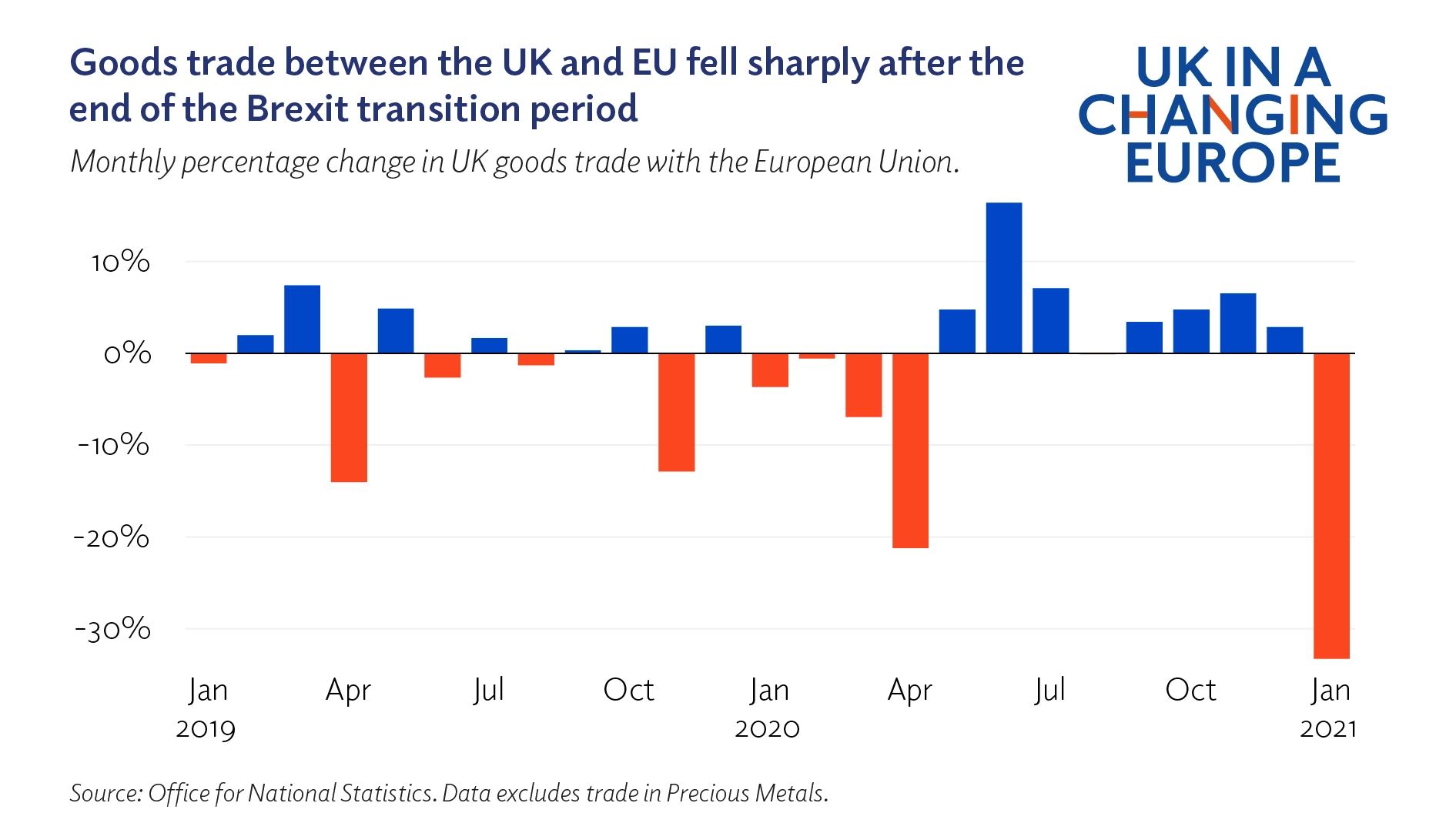Brexit And The UK Luxury Goods Market: An Export Perspective

Table of Contents
Navigating New Trade Barriers
Brexit introduced significant trade barriers impacting the export of UK luxury goods. Understanding and navigating these challenges is crucial for survival and growth.
Tariffs and Customs Duties: The introduction of tariffs and customs duties on goods moving between the UK and the EU has increased costs for luxury goods exporters. This directly impacts profitability, making UK products less competitive.
- Increased costs: Tariffs add a significant percentage to the final price, making UK luxury goods less attractive compared to competitors from within the EU or other tariff-free zones.
- Complexities in customs procedures: New customs declarations, documentation requirements, and processes have added significant administrative burdens and delays.
- Potential delays in delivery: These complexities can lead to delays in shipping, potentially damaging brand reputation and customer satisfaction. For example, a bespoke handcrafted suit priced at £5,000 could incur an additional £500 in tariffs, impacting its competitiveness.
Regulatory Compliance: Meeting new regulatory requirements is another significant hurdle. Different labeling requirements, product safety standards, and sanitary and phytosanitary (SPS) regulations across various markets pose compliance challenges.
- Need for updated certifications: Exporters must obtain new certifications and adapt to different labeling standards for each target market, a costly and time-consuming process.
- Compliance costs: The cost of complying with these regulations can be substantial, particularly for smaller luxury goods businesses.
- Potential delays due to non-compliance: Failure to meet regulatory requirements can lead to goods being seized or rejected, causing significant financial losses and reputational damage. For instance, cosmetics companies must adhere to strict EU regulations regarding ingredients and testing, requiring substantial investment in compliance.
Non-Tariff Barriers: Beyond tariffs and regulations, non-tariff barriers significantly impact the efficiency and cost of exporting.
- Increased administrative burden: Increased paperwork, inspections, and other administrative processes create delays and increase operational costs.
- Potential for delays and lost sales due to logistical challenges: Navigating complex customs procedures can lead to delays in delivery, potentially resulting in lost sales and frustrated customers. The lack of streamlined processes can be particularly challenging for time-sensitive luxury goods deliveries. For example, obtaining the necessary phytosanitary certificates for exporting high-end flowers can be incredibly complex and time-consuming.
Adapting Export Strategies
To thrive in the post-Brexit environment, UK luxury goods exporters need to adapt their strategies proactively.
Diversification of Markets: Reducing reliance on the EU market is crucial. Diversifying into new markets in Asia, North America, or other regions minimizes risk and unlocks new growth opportunities.
- Exploring new markets in Asia, North America, or other regions: Thorough market research is vital to identify regions with high demand for UK luxury goods and develop tailored marketing strategies.
- Market research: Understanding consumer preferences, cultural nuances, and competitive landscapes in new markets is key to successful expansion.
- Establishing new distribution channels: Building relationships with importers, distributors, and retailers in target markets is essential for reaching new customers. For example, a successful British handbag brand expanded into the Japanese market by partnering with a well-established Japanese retailer.
E-commerce and Digital Marketing: A strong online presence is paramount for reaching international customers.
- Building an effective online presence: A user-friendly website with multilingual support and localized payment options is crucial for attracting international buyers.
- Utilizing targeted advertising: Digital marketing campaigns, including social media marketing and search engine optimization (SEO), can effectively reach target audiences in various markets.
- Managing international shipping: Efficient and reliable international shipping is essential for delivering luxury goods promptly and securely. Luxury brands need to offer seamless and premium shipping options to meet customer expectations.
Supply Chain Resilience: A robust and adaptable supply chain is critical for ensuring timely delivery.
- Diversification of suppliers: Reducing dependence on single suppliers mitigates risks associated with disruptions to the supply chain.
- Risk management strategies: Implementing strategies to identify and mitigate potential supply chain disruptions, such as political instability or natural disasters, is essential.
- Establishing alternative logistics routes: Having alternative shipping routes and logistics providers ensures business continuity in case of unexpected disruptions. For example, a luxury watchmaker might source materials from multiple countries to mitigate risks associated with single-source reliance.
Opportunities for UK Luxury Goods
Despite the challenges, Brexit presents opportunities for UK luxury brands.
Focus on Brand Storytelling & Heritage: The UK's reputation for craftsmanship and heritage provides a powerful selling point.
- High-quality product photography: Showcasing the intricate details and craftsmanship of luxury goods is crucial for attracting discerning buyers.
- Emphasizing craftsmanship: Highlighting the skills and expertise of UK artisans helps build brand loyalty and justifies higher price points.
- Building brand loyalty: Creating a strong brand identity and fostering customer relationships are crucial for building long-term success. A heritage brand successfully leverages its history and storytelling to attract customers who value authenticity and quality.
Sustainability and Ethical Sourcing: Consumers are increasingly demanding sustainable and ethically sourced luxury goods.
- Eco-friendly packaging: Utilizing sustainable packaging materials demonstrates a commitment to environmental responsibility.
- Sustainable materials: Sourcing materials from responsible and sustainable sources enhances brand image and appeals to environmentally conscious customers.
- Fair labor practices: Ensuring fair wages and working conditions throughout the supply chain builds trust and enhances brand reputation. For example, a luxury clothing brand showcasing its commitment to sustainable materials and fair trade practices can attract a significant portion of ethically minded consumers.
Government Support and Initiatives: The UK government offers various support programs for exporters.
- Grants: Several grants and funding schemes are available to help businesses navigate the complexities of exporting.
- Export finance schemes: Government-backed export finance schemes provide access to affordable financing for international trade.
- Trade missions: Participating in trade missions and exhibitions can help connect businesses with potential buyers in new markets. [Link to relevant government website]
Conclusion
Brexit and the UK luxury goods market present both significant challenges and exciting opportunities. The new trading landscape requires adaptation and strategic planning. Successfully navigating the complexities of tariffs, regulations, and logistical hurdles demands a proactive approach encompassing market diversification, enhanced digital marketing, and a resilient supply chain. By leveraging the UK’s strong reputation for craftsmanship, emphasizing sustainability, and utilizing available government support, UK luxury goods exporters can build a successful future in the global market. To further explore the resources and support available, we encourage you to visit [link to relevant resource] and take advantage of the opportunities presented in this evolving market.

Featured Posts
-
 D Wave Quantum Qbts Stock Price Fall In 2025 A Comprehensive Overview
May 21, 2025
D Wave Quantum Qbts Stock Price Fall In 2025 A Comprehensive Overview
May 21, 2025 -
 Bbai Stock A Deep Dive Into The 17 87 Drop And Future Outlook
May 21, 2025
Bbai Stock A Deep Dive Into The 17 87 Drop And Future Outlook
May 21, 2025 -
 Trans Australia Run Will The Record Be Broken
May 21, 2025
Trans Australia Run Will The Record Be Broken
May 21, 2025 -
 Bp Executive Compensation A Significant 31 Reduction
May 21, 2025
Bp Executive Compensation A Significant 31 Reduction
May 21, 2025 -
 Abn Amro Waarschuwt Voedingsindustrie Te Afhankelijk Van Goedkope Arbeidsmigranten
May 21, 2025
Abn Amro Waarschuwt Voedingsindustrie Te Afhankelijk Van Goedkope Arbeidsmigranten
May 21, 2025
Latest Posts
-
 Benjamin Kaellman Penkille Huuhkajien Avauskokoonpanossa Kolme Muutosta
May 21, 2025
Benjamin Kaellman Penkille Huuhkajien Avauskokoonpanossa Kolme Muutosta
May 21, 2025 -
 Huuhkajien Avauskokoonpanossa Merkittaeviae Muutoksia Kaellman Jaeae Pois
May 21, 2025
Huuhkajien Avauskokoonpanossa Merkittaeviae Muutoksia Kaellman Jaeae Pois
May 21, 2025 -
 Huuhkajat Avauskokoonpanoon Kolme Muutosta Kaellman Penkille
May 21, 2025
Huuhkajat Avauskokoonpanoon Kolme Muutosta Kaellman Penkille
May 21, 2025 -
 Kaellmanin Ja Hoskosen Puola Seuraura Paeaettynyt
May 21, 2025
Kaellmanin Ja Hoskosen Puola Seuraura Paeaettynyt
May 21, 2025 -
 Jalkapallo Huuhkajien Avauskokoonpanossa Yllaetyksiae Kaellman Penkillae
May 21, 2025
Jalkapallo Huuhkajien Avauskokoonpanossa Yllaetyksiae Kaellman Penkillae
May 21, 2025
